本文由 T.R.O.P: terrains +open space &魏玛景观 授权mooool发表,欢迎转发,禁止以mooool编辑版本转载。
Thanks T.R.O.P: terrains +open space & Weimar Group for authorizing the publication of the project on mooool, Text description provided by T.R.O.P: terrains +open space & Weimar Group.
T.R.O.P: terrains +open space & 魏玛景观:绍兴地处江南,这里河湖交错,水网纵横,小桥流水、古镇小城、田园村舍、如诗如画。
在开始概念设计之前,我们团队的首要任务是尝试着全面了解绍兴的特点,不仅包括城市背景和地理环境,还有绍兴的历史。作为设计师,由于我们的团队成员都爱上了绍兴水乡,不仅爱着建筑与周围水域的关系,也爱着绍兴人与景观的联结方式。我们爱着这里的建筑设计,所有的桥梁、道路、亭子、空间、通道,都激励人去亲近河流。我们也爱着绍兴的当地植物,希望在项目中使用它们。最后,我们喜爱古代设计与环境完美融合的方式。我们希望创造一个童话般的、亲水而居的项目。
T.R.O.P: terrains +open space & Weimar Group: Shaoxing is located in the south of the Yangtze River, known as Jiangnan, where one can get lost in the crossing alleys, bridges, canal network, and idyllic scenes appreciating itssimplicity and leisure.
Before starting landscape concept design, the first task of our team is to understand the uniqueness of Shaoxing, including the urban and geographical context, as well as its historical background. As designers, our love of Shaoxing is deep-seated in itsrelationship between building and canals, as well as the link between Shaoxinger and their town landscape. We love its architectural design. Every bridge, road, pavilion, and alley encourage people to interact with the river. Besides, we also love the local planting palette in Shaoxing and hope to integrate it into this project. Specifically, we love the way how ancient design can be integrated with the environment. We hope to create a fantastic waterfront project.
▽项目鸟瞰 Aerial view of the project


我们可以从水乡绍兴学到什么呢?What can we learn from the ancient watertown of Shaoxing?
如果您看到我们的项目,会发现它就像是被河流环绕的私人岛屿,是一片极美的土地和建筑。为了创造优美的景观,我们必须仔细考虑三组关系——建筑与空间之间的关系、人与景观之间的关系,以及建筑与水文之间的关系。在整个安澜府大区中,这三组关系也是贯穿始终。而作为销售中心和会所,它更多的体现了建筑与水文之间的关系。
When you catch our project, it feels like discovering an extraordinary architecture piece set on a supremely beautiful land island surrounded by rivers. To create a picturesque landscape, we must carefully consider three types of relationship – the relationship between architecture and site, people and landscape, as well as architecture and hydrology. These three relationships guide landscape design through the design process in the entire residential area of An Villa. Presenting a relationship between architecture and hydrology, the landscape of An Villa offers visitors a cultural excursion, besides serving as a sales gallery and clubhouse.
▽整体鸟瞰 Overall bird’s eye view
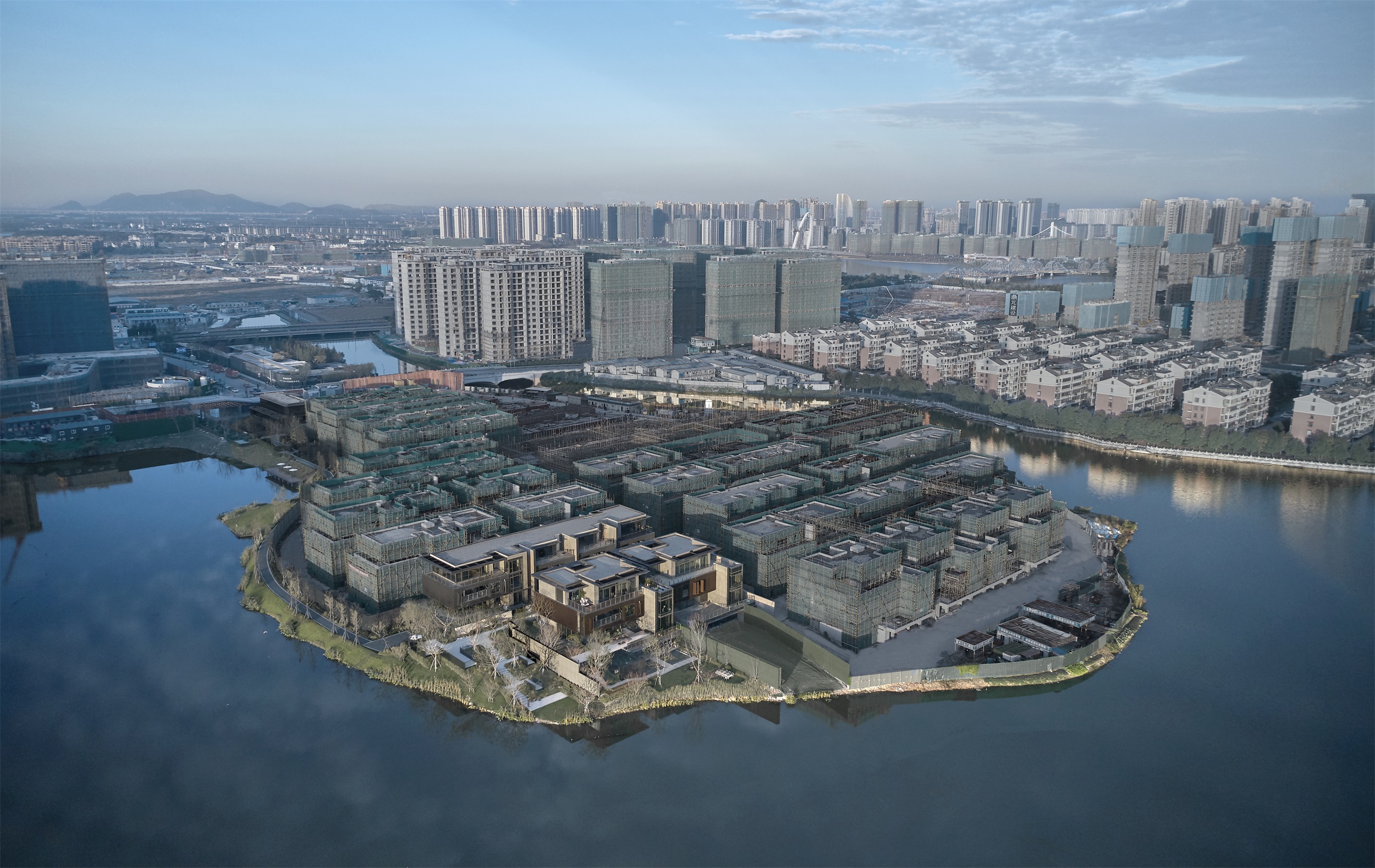
通过研究水乡绍兴,我们获得了很多启示。例如,在灵感方面,如入口到达庭院,我们设计了装置艺术一般的庭院水景,以表现绍兴的历史。我们将绍兴建筑的屋檐和岛屿周围的河流相结合,设计了屋顶落水,既可以供人们避雨,也可以营造出雨打屋檐的效果。该精致的水景装置还可以围合空间,隔离街道的喧嚣,形成私人空间。同时,对于参观者来说,他们看到这道靓丽的风景,也会感到非常自豪。这些都是实体的灵感。
The character of the ancient house roof and water network endorses the main idea very much. The design team had got inspired in many ways by researching the watertown of Shaoxing. One is from architecture. The heritage roofs use the imbrex and tegula, overlapping roof tiles, to keep out rain and drain it efficiently. Drawing inspiration from this architectural technique, we create a water feature at the arrival court to facilitate the departure and arrival procedures. Moreover, the delicate roof structure not only captures the essence of the ancient roof but also highlights the dwelling history of Shaoxing. By creating a rain-like effect, this artistic installation becomes the pride and pleasure of Shaoxing architecture andcultural heritage.
▽前场水景空间演绎动图 Front court water scene animation
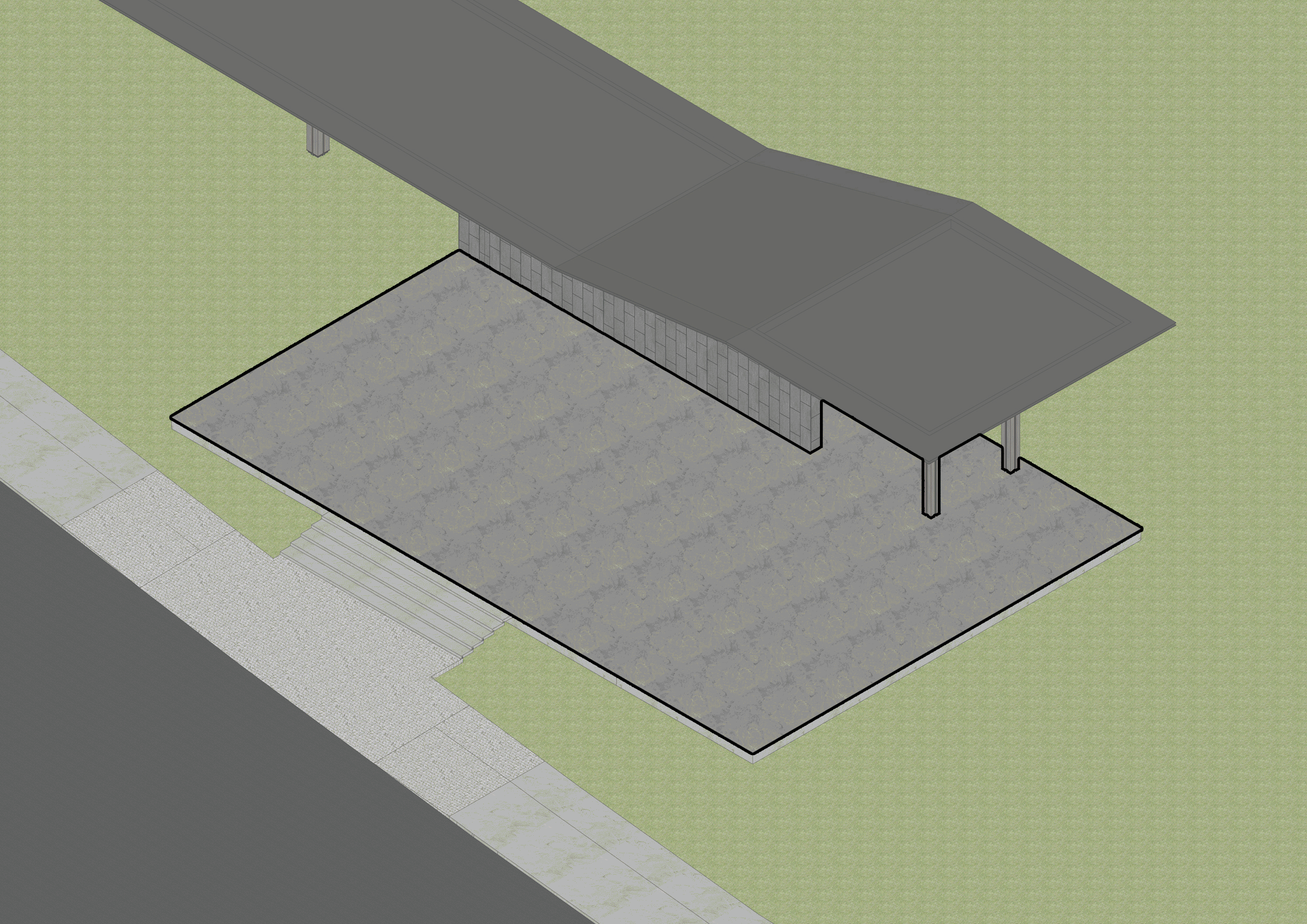
▽入口空间 Entrance space
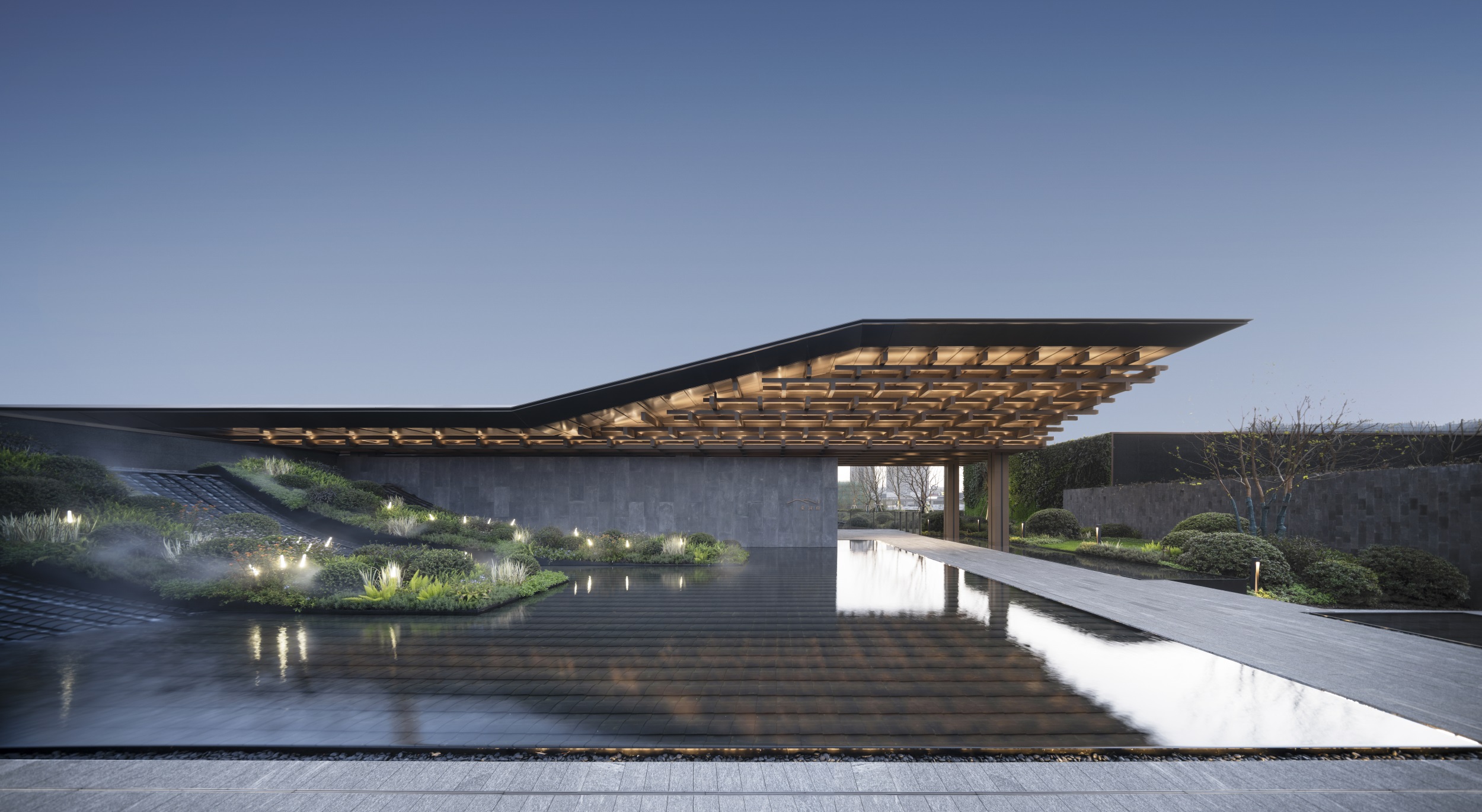
▽入口空间鸟瞰 Bird’s eye view of entrance
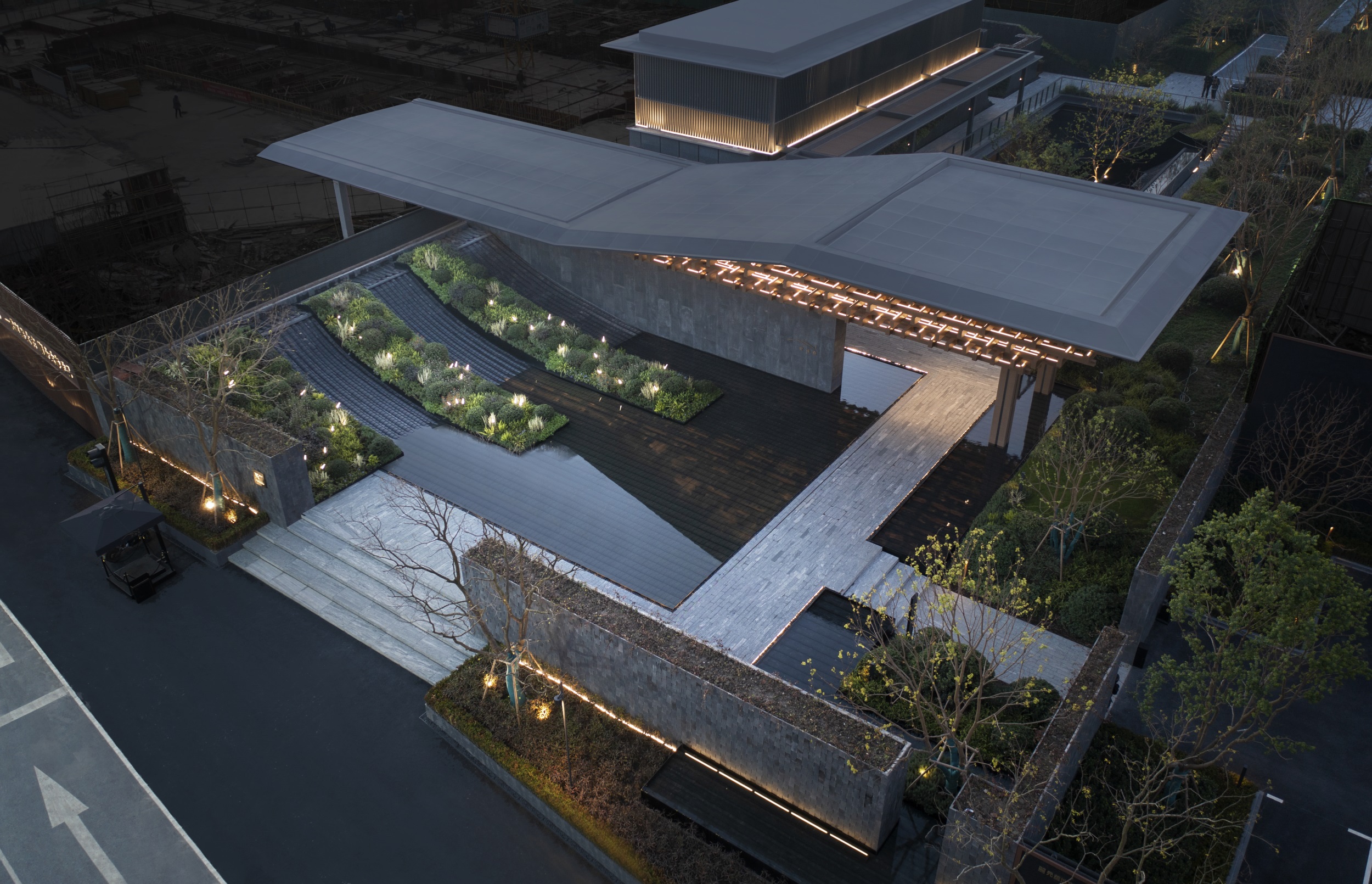
▽精致的水景花镜 Exquisite Waterscape Flower Mirror

我们还从水乡绍兴汲取了环境灵感。我们观察到屋檐是可以保护人们免受雨淋,并将雨水引到排水沟,以及老城的雨水排水管理方式。然而如今的绍兴市,每年雨水丰沛,偶有洪水。在这个项目中,我们尝试了更好的雨水管理方式。我们不想把雨水全部排入市政管道,增加城市的负担。我们尽全力将水留在岛内,或者在排水前合理处理雨水,希望能做到到百分百。这并非雨水使用,而是雨水管理,我们想将雨水引入景观。在晴朗的季节,这是一个雕塑性且带人回到传统江南氛围感的水景,而在雨季时,青瓦屋檐水景与淅淅沥沥的雨点和水声共谱了一曲禅意的协奏曲。
Another inspiration is from the environment of Shaoxing. As we pay attention to the relationship between roof and water runoff, we see the way the roofs protect us from the rain and then lead the rain to the gutter and how they manage the rainwater in the oldtown. Now in the current city of Shaoxing, we have a lot of rain every year and sometimes we have floods. In this project, we try to have better rainwatermanagement. We don’t want to push all the rainwater that we got to become the burden of the city. If possible, we try to be 100% and keep the water within our island, or we treat it nicely before we release it to the island. It’s not the use of water; it’s more like rainwater management that we try to create in our landscape. That’s the landscape principle of the An Villa.
▽设计手稿 Design manuscript

▽空间演绎 Space interpretation
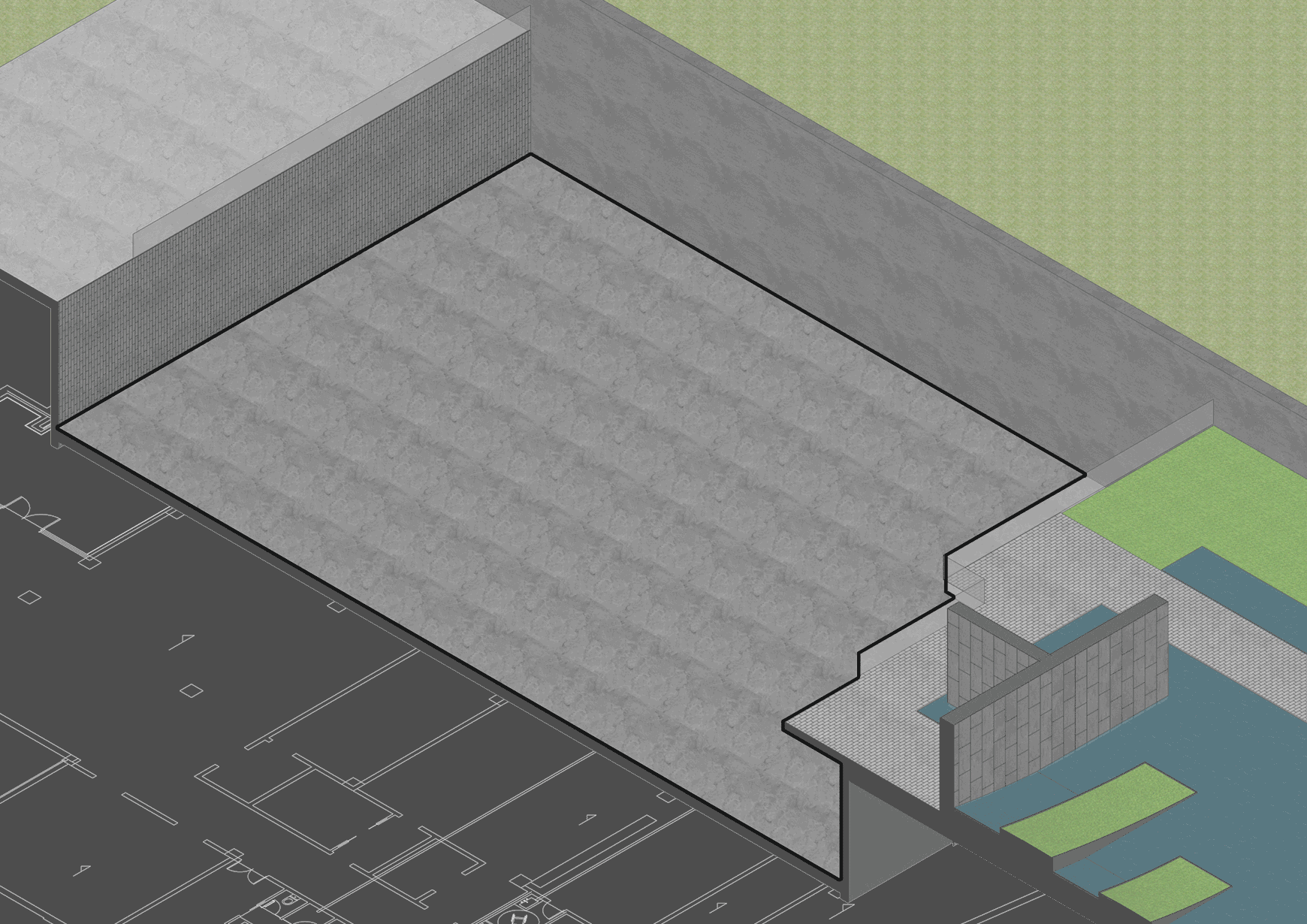
▽水景庭院鸟瞰 Bird’s eye view of waterscape courtyard

▽光影下的屋面景观 Roof landscape under light and shadow

▽精致的细节展示 Exquisite detail display
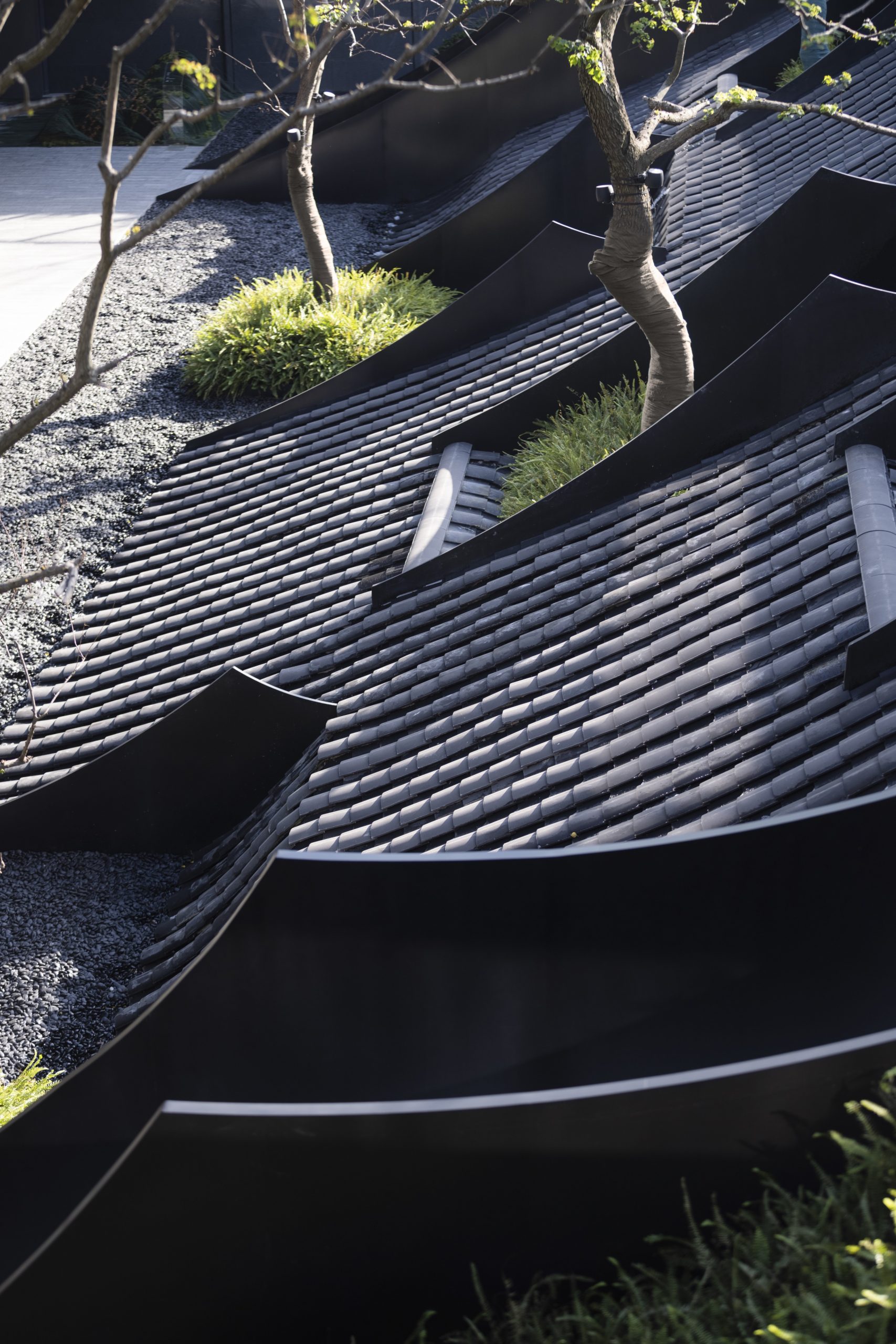

江南长大的孩子记忆里一定有雨打屋檐的景象,临近夏天的结尾总是遇上雨季,绵密的雨敲打屋檐几日,夏天就这样悄悄过去了。“雨打屋檐”是一代又一代住在江南土地上的人对一个季节的记忆。
然而江南的记忆不该停留在江南人小时候的回忆里。雨打屋檐,时间在空间里被循环——记忆循环、居住循环、材料循环。
Children, who grow up in Jiangnan, can never forget the scene of rain hitting the eave. Every end of summer follows a rainy season. After dripping from eaves for a few days, the summer fades away swiftly. “Rain beating the eaves” carries the memory of the season for generations who live in Jiangnan.
However, the memory of Jiangnan should go further than just living in the childhood memories of every Jiangnanese. When rain hits the eaves, it is time to recurrence the space –recalling memories, recycling buildings, and reusing materials.

记忆循环-屋顶空间嫁接 Recalling Memories – Spatial collageof the roof
把绍兴的屋顶嫁接到下沉庭院里,这是对时间的一种再利用。时间和空间都是计量单位,空间里有体积,光影,色彩;时间里有声音,味道,触感。记忆可以被留住,更可以被循环。当场地被重塑,“屋顶”这一重要的“基因记忆”就自然而然的被嫁接进来。
Grafting the roof of Shaoxing into the sunken courtyard is reuse of time. Both time and space are units of measurement. There are volume, light, shadow, and color in space; There is sound, taste, and touch in time. Memory can be retained and recycled. When the site is remodeled, the important “genetic memory” of”roof” is naturally grafted in.

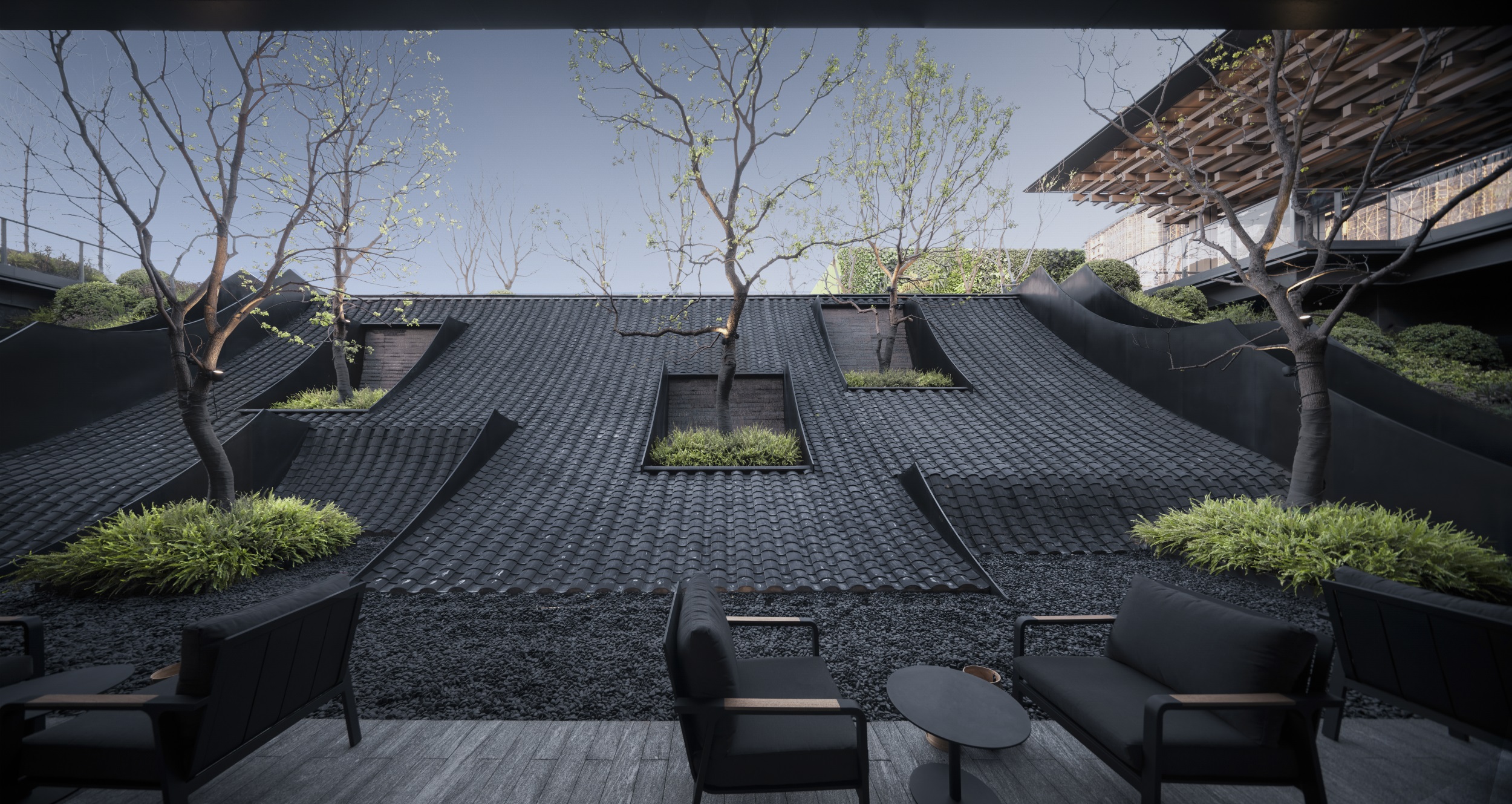

居住循环-老建筑与新建筑缝合 Recycling Buildings- stitch old buildings onto new ones
城市化的过程就是把大多数平房推倒,建起高楼大厦。这种青瓦白墙的南方传统民居在内部使用上已经跟不上时代需求,但他的屋顶空间可以被再利用,形成新的空间使用方式,原本只能鸟瞰的屋顶,可以转变成一个个趣味的花园,供人攀爬休憩,让都市人可以再次体验上房揭瓦的乐趣。将现代钢筋水泥和传统屋顶缝合,让“传统”作为现代室内的外部延伸,是让人开启回归自然的重要一步。
The process of urbanization has pushed down most bungalows to build high-rises. This traditional southern residence with dark grey tiles and white walls can no longer keep up with the needs of the times in terms of internal use, but its roof space can be reused to form a new way of space use.The originally bird’s-eye view roof can be transformed into interesting gardens for people to climb and rest, so that urban people can once again experience the fun of going to the house and uncovering tiles. Stitching modern reinforcedcement with traditional roof and making “tradition” as the external extension of modern interior is an important step for people to return to nature.
▽新老建筑的融合再利用 Integration and reuse of new and old buildings
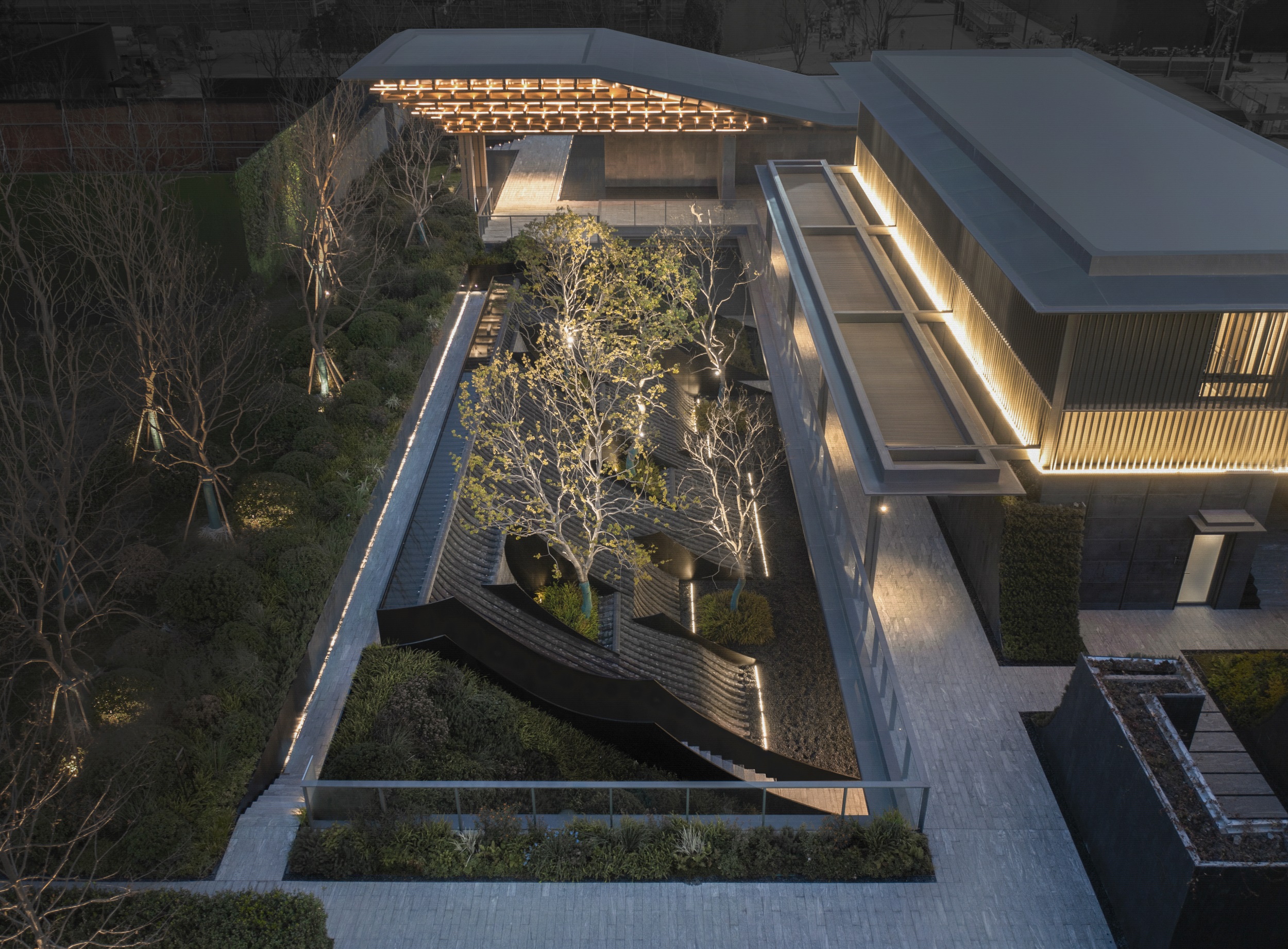

▽延伸的外部景象 Extended exterior view
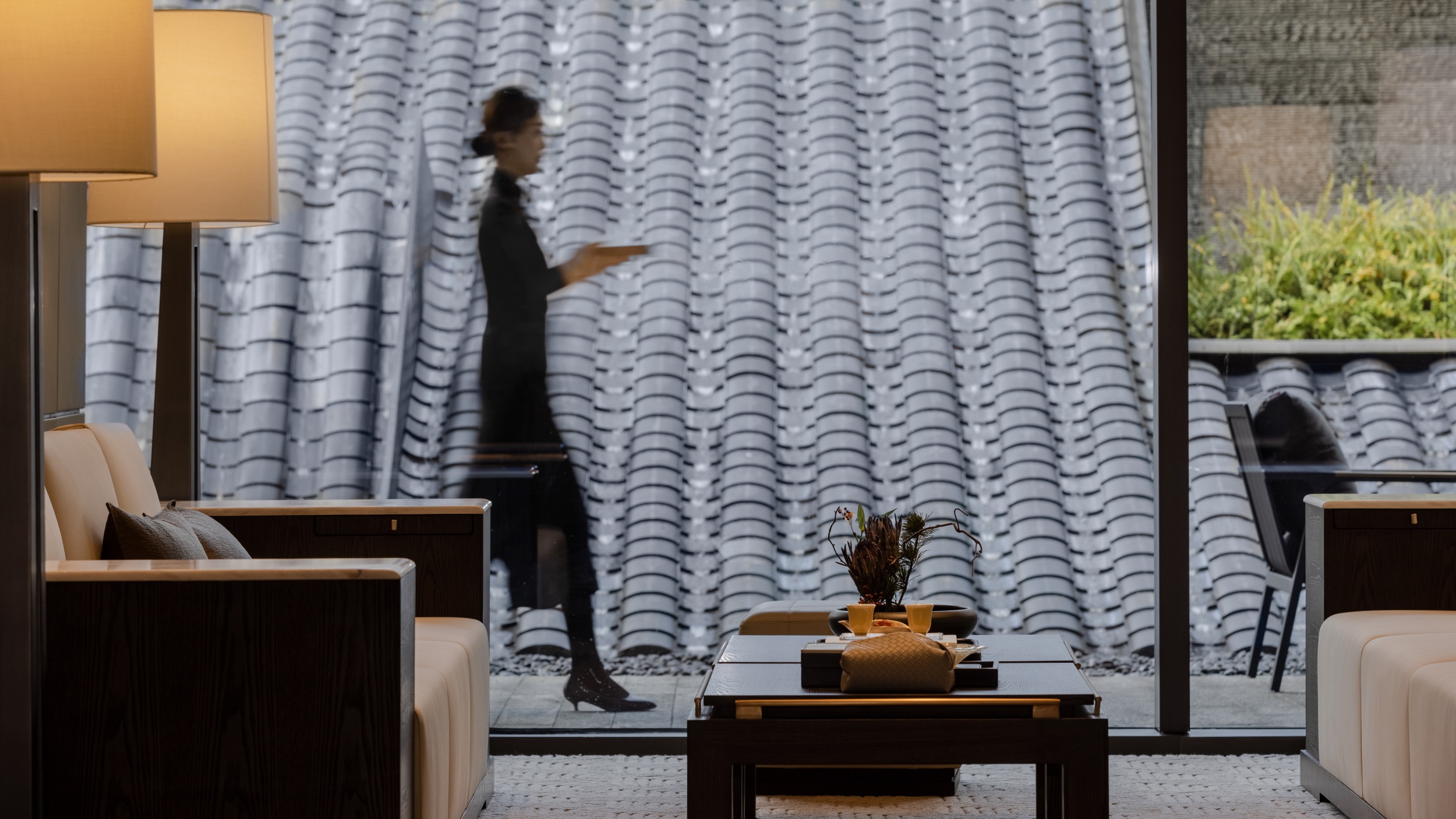
▽玻璃上的屋檐倒影 Eaves reflection on glass
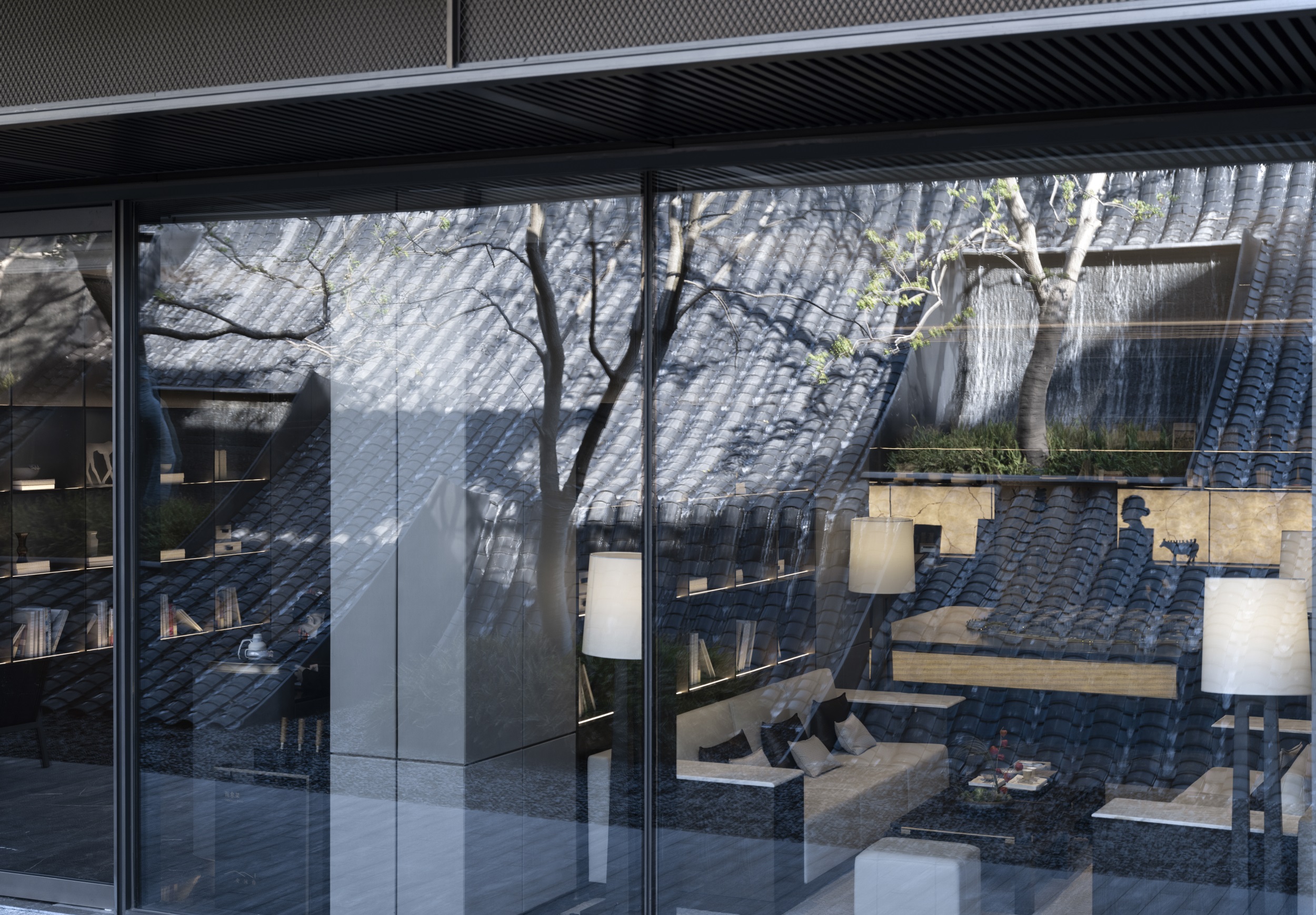
材料循环-瓦片再利用,火山岩的使用,粗糙材料与精致材料的对比 Recycling Material- tiles and stones contrast
瓦的视角,瓦片由陶土烧制,缺乏坚固的质地,但通过重复叠铺,最终能形成巨大的屋顶,这种低调的构筑方式正好对应南方人的性格和居住形态。
In terms of the tiles, although it is made from clay and is lack solid property, it can be stacked up in layers to become a huge roof. This low-key construction method just corresponds to the character and living form of southerners.
▽形式多样的瓦片 Various forms of tiles
▽瓦片的组合再利用 Combination and reuse of tiles


▽流水的屋檐,是记忆的延续 The eaves of flowing water are the continuation of memory
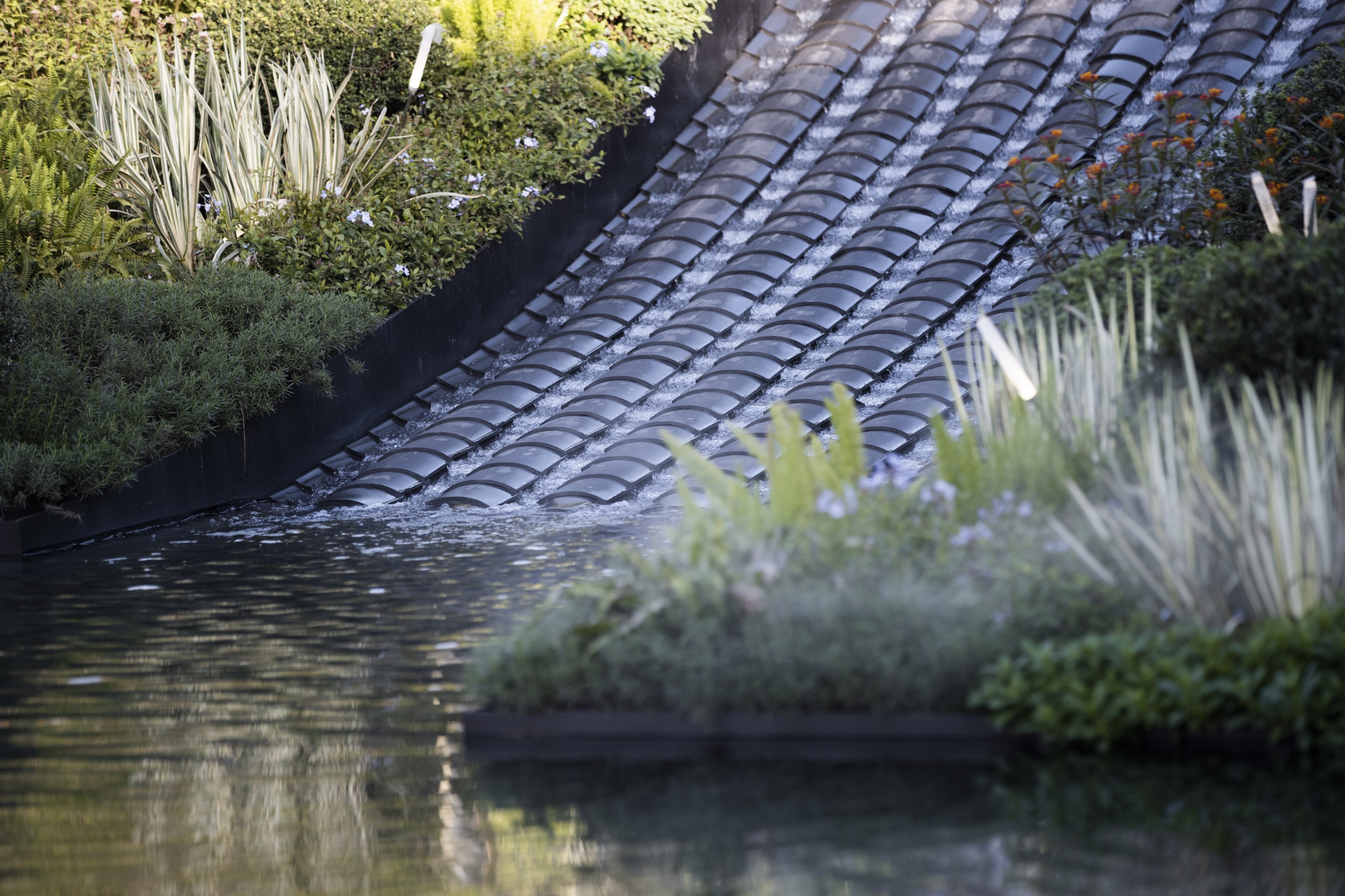
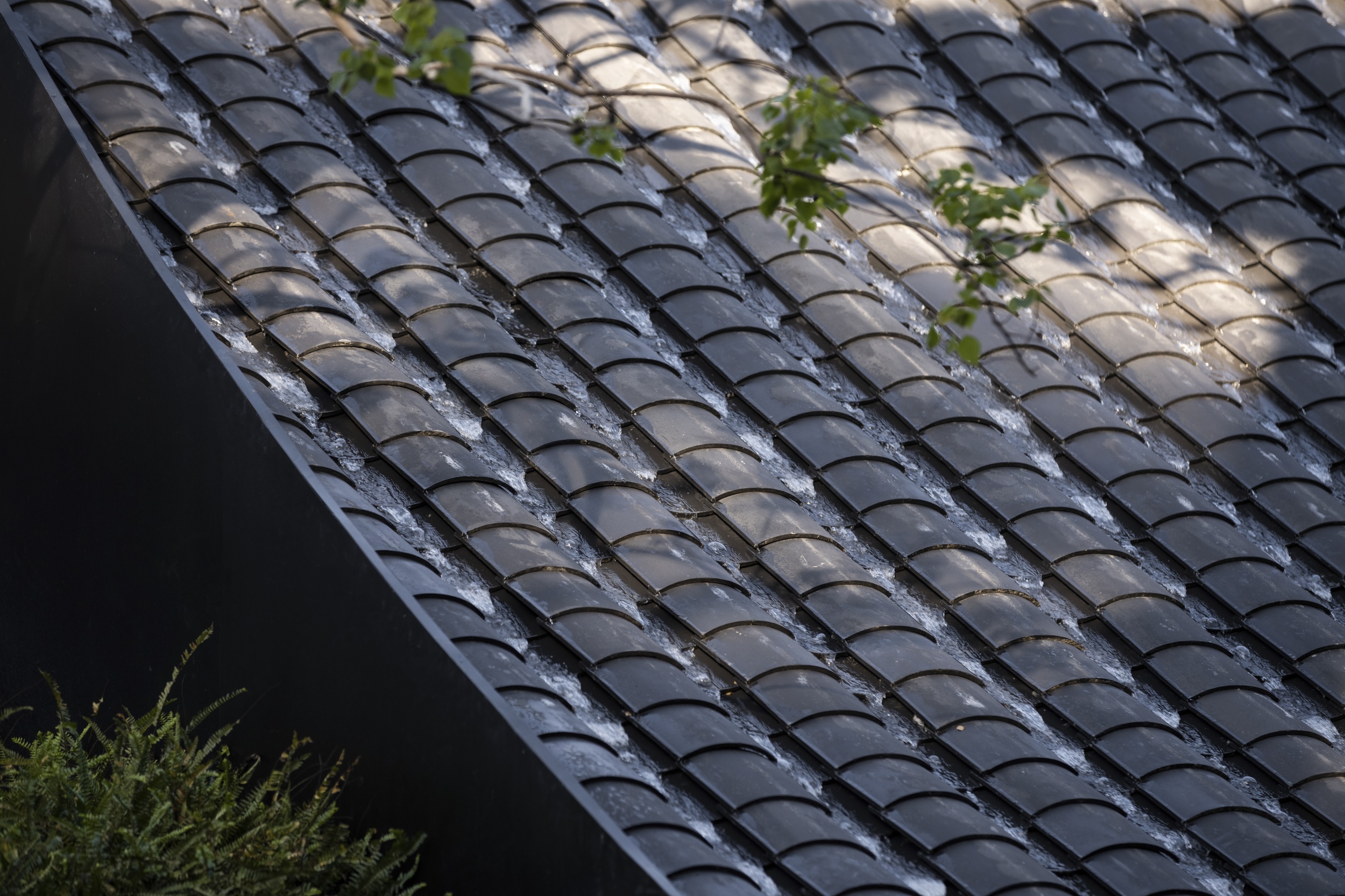
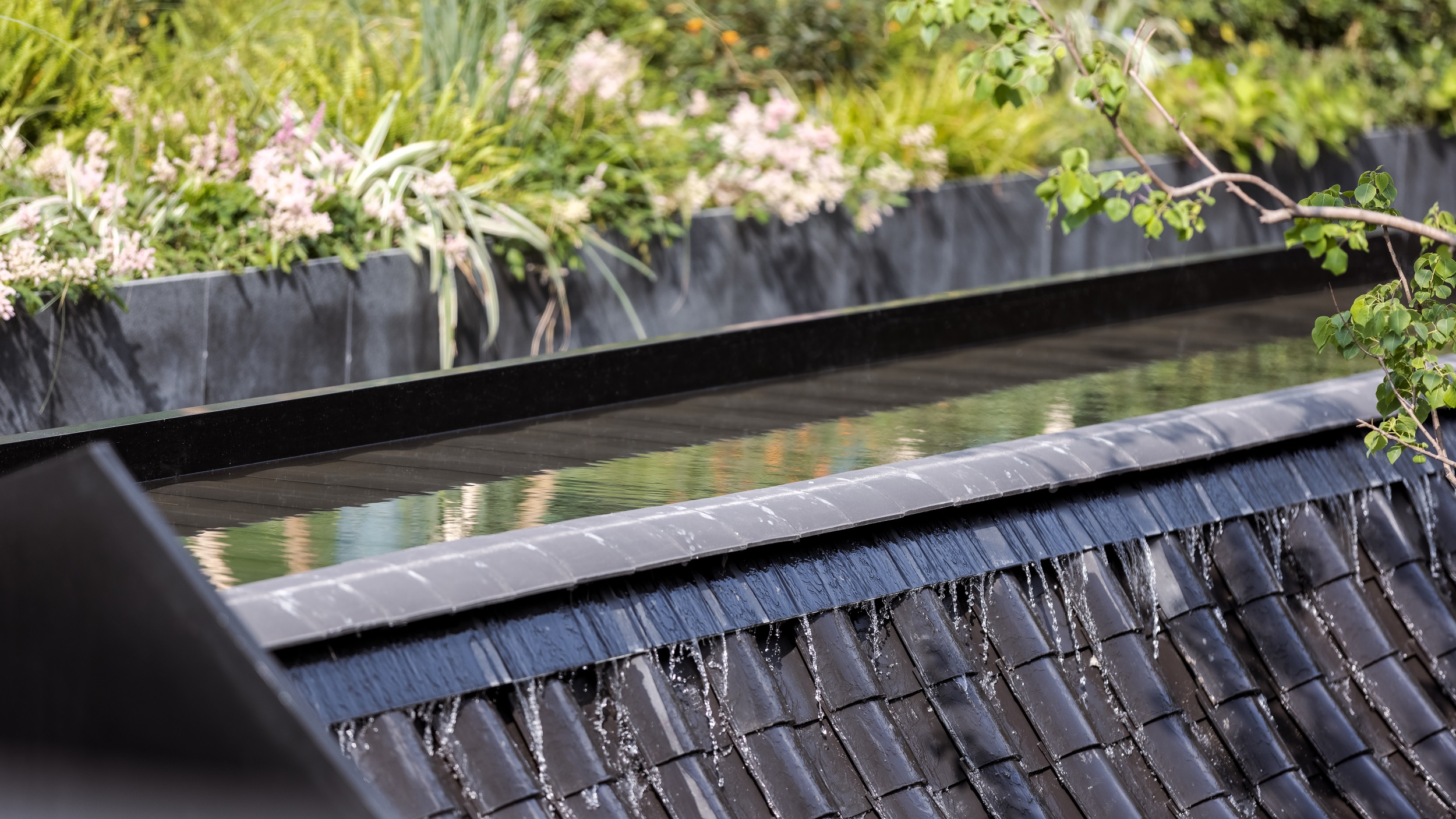
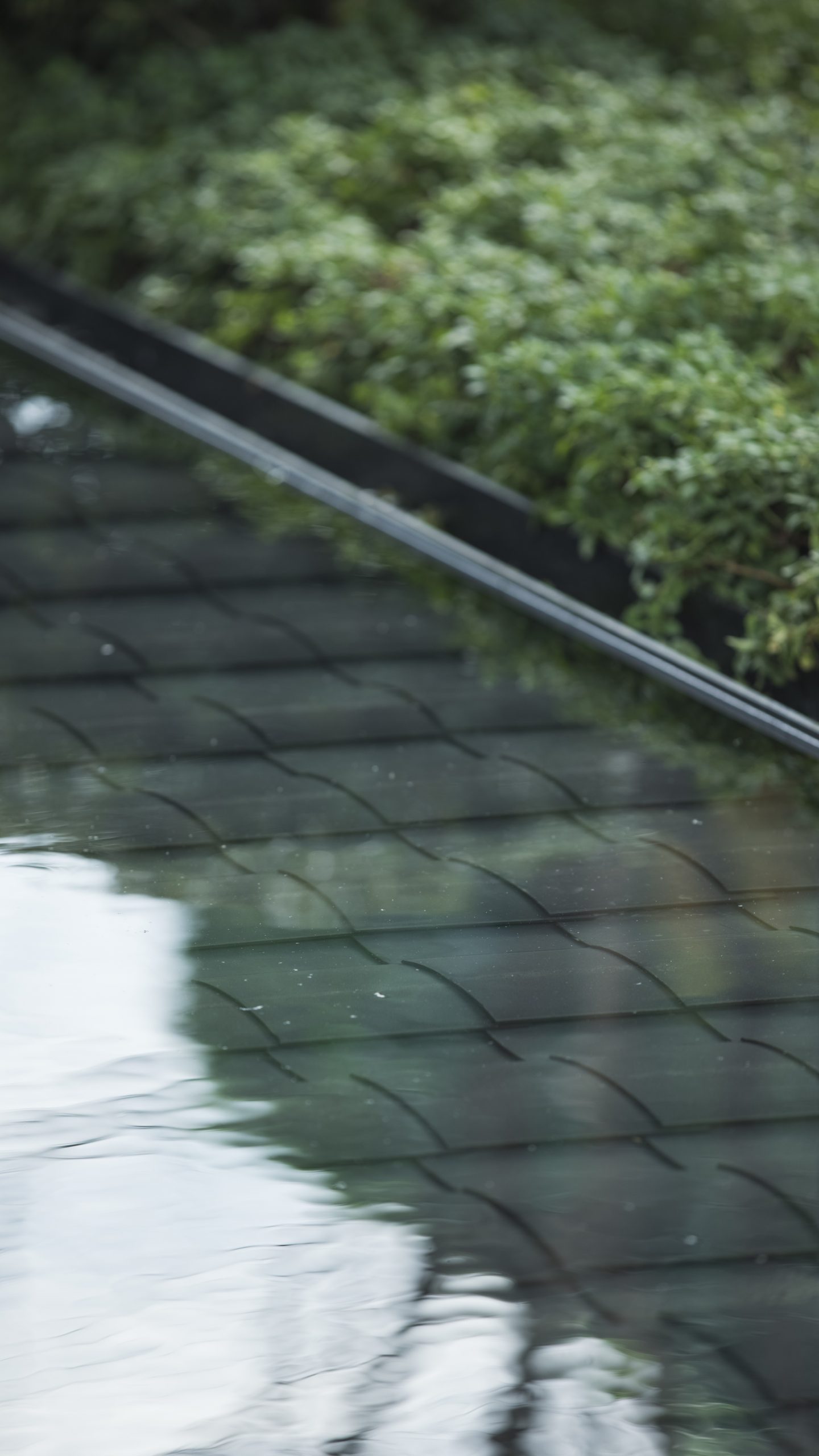
砖的视角,砖块一层一层堆砌,是一种老式的构筑方式,静态稳定,不可迁移。但也更容易留存时间的痕迹。但在实际建造过程中发现,砖需要较长的时间才能形成历经岁月的痕迹,因而刚烧制而成的青砖缺少了一些沉淀,所以替换成了火山岩,既保有了砖的拼贴纹理,同时火山岩表面大小不一的孔径,增加了质感的丰富性。
For bricks, bricks are stacked layer by layer, which is an old-fashioned construction method, staticand stable, and cannot be moved. But it is also easier to retain traces of time. However, in the actual construction process, it is found that the brick stake a long time to form traces of years. Therefore, the newly fired grey bricks lack some precipitation, so they are replaced with volcanic rock, which not only retains the collage texture of the bricks but also increases the richness of texture due to the different pore sizes on the volcanic rock surface.
▽火山岩石砖演绎老式的砖块,营造丰富的质感 Volcanic rock bricks interpret old-fashioned bricks and create a rich texture
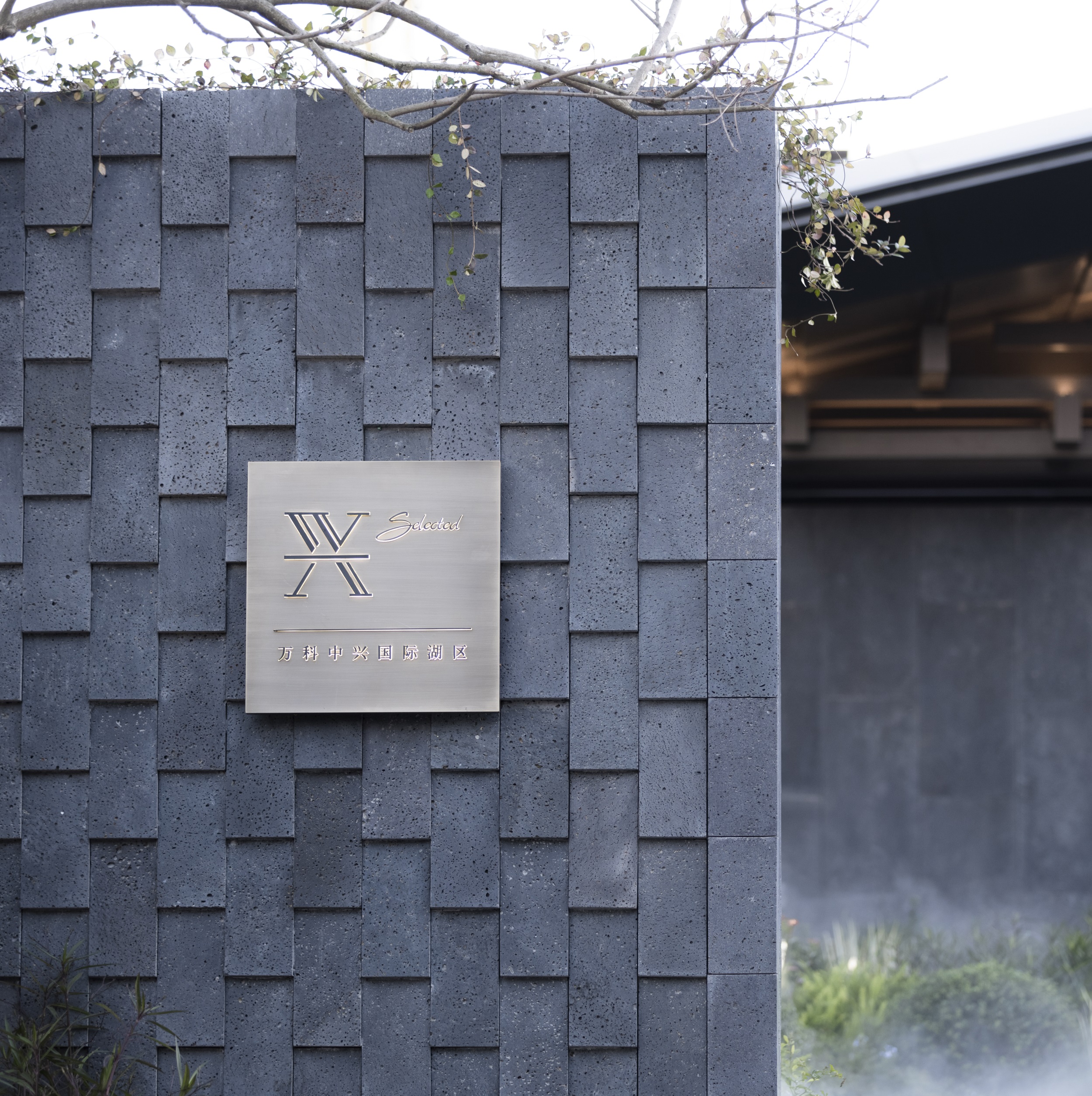


金属的视角,少量金属的加入,是为了增加肌理对比的艺术化冲突。这也是“新”与“旧”的一种隐喻,瓦片粗糙又亲近,就像江浙地区小时候生活的环境;钢板精致冷酷,规定了路径和树坑的位置,严肃有纪律,就像现代社会的信息文明。
For metal, a small amount of metal is added to increase the artistic conflict of texture contrast. This is also a metaphor for “new” and “old”. The tiles are roughand close, just like the environment in Jiangsu and Zhejiang when they lived as children; The steel plate is exquisite and cold, specifies the path and the location of the tree pit, and is serious and disciplined, just like the information civilization in modern society.
▽新与旧的时代碰撞融合 The new and old times collide and merge
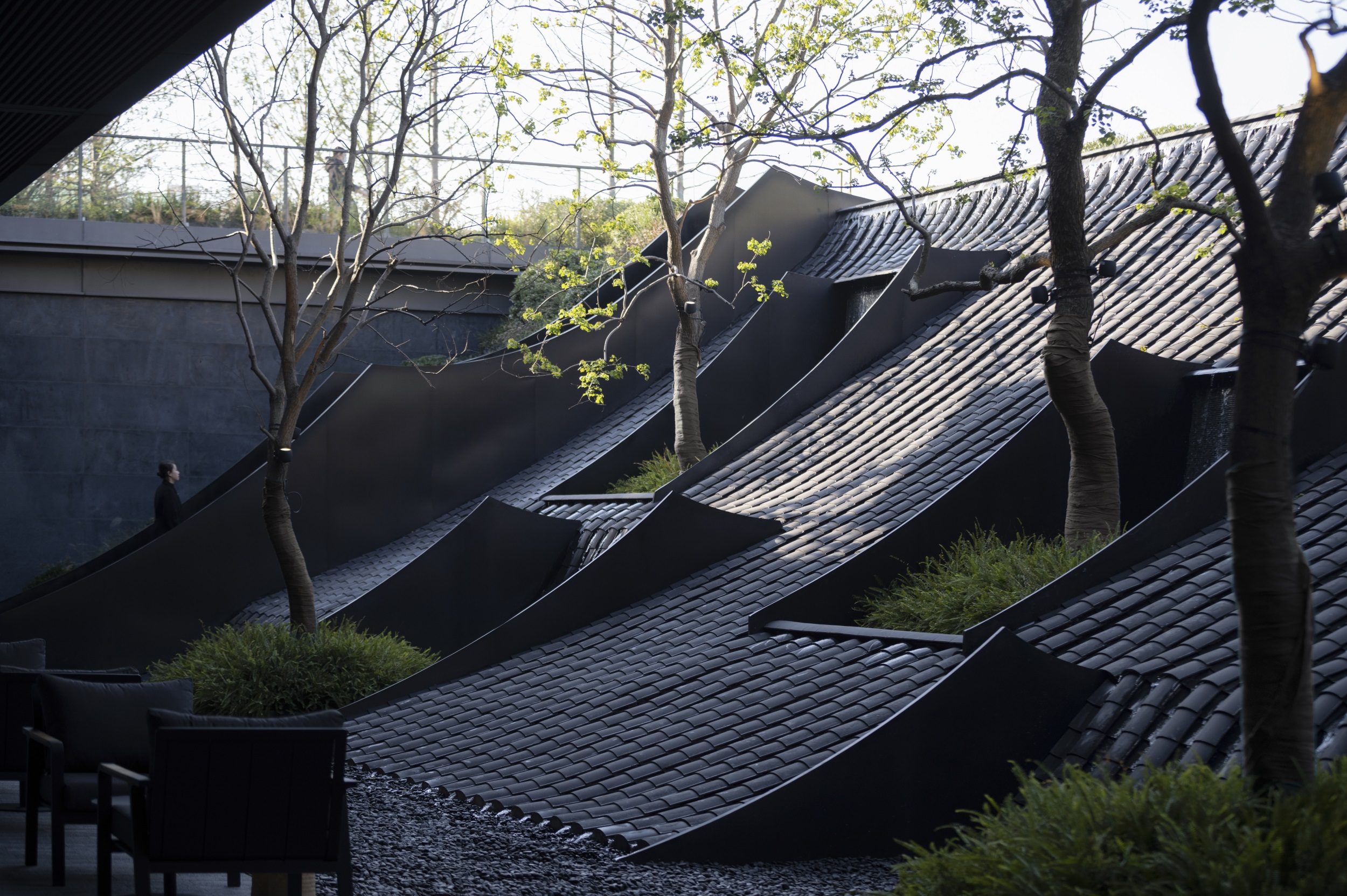
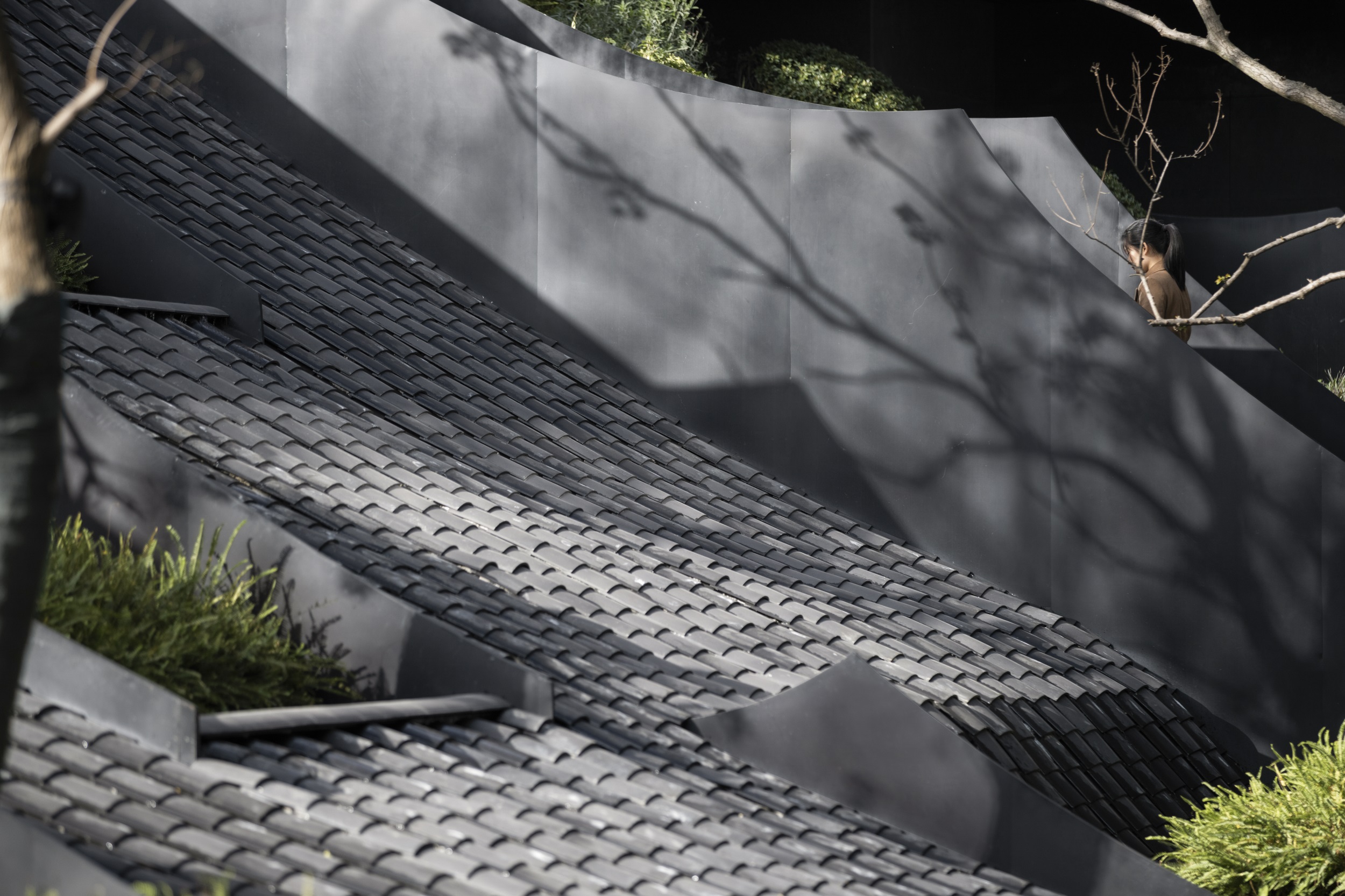
▽金属与陶砖的细节缝合 Detail stitching of metal and ceramic tiles

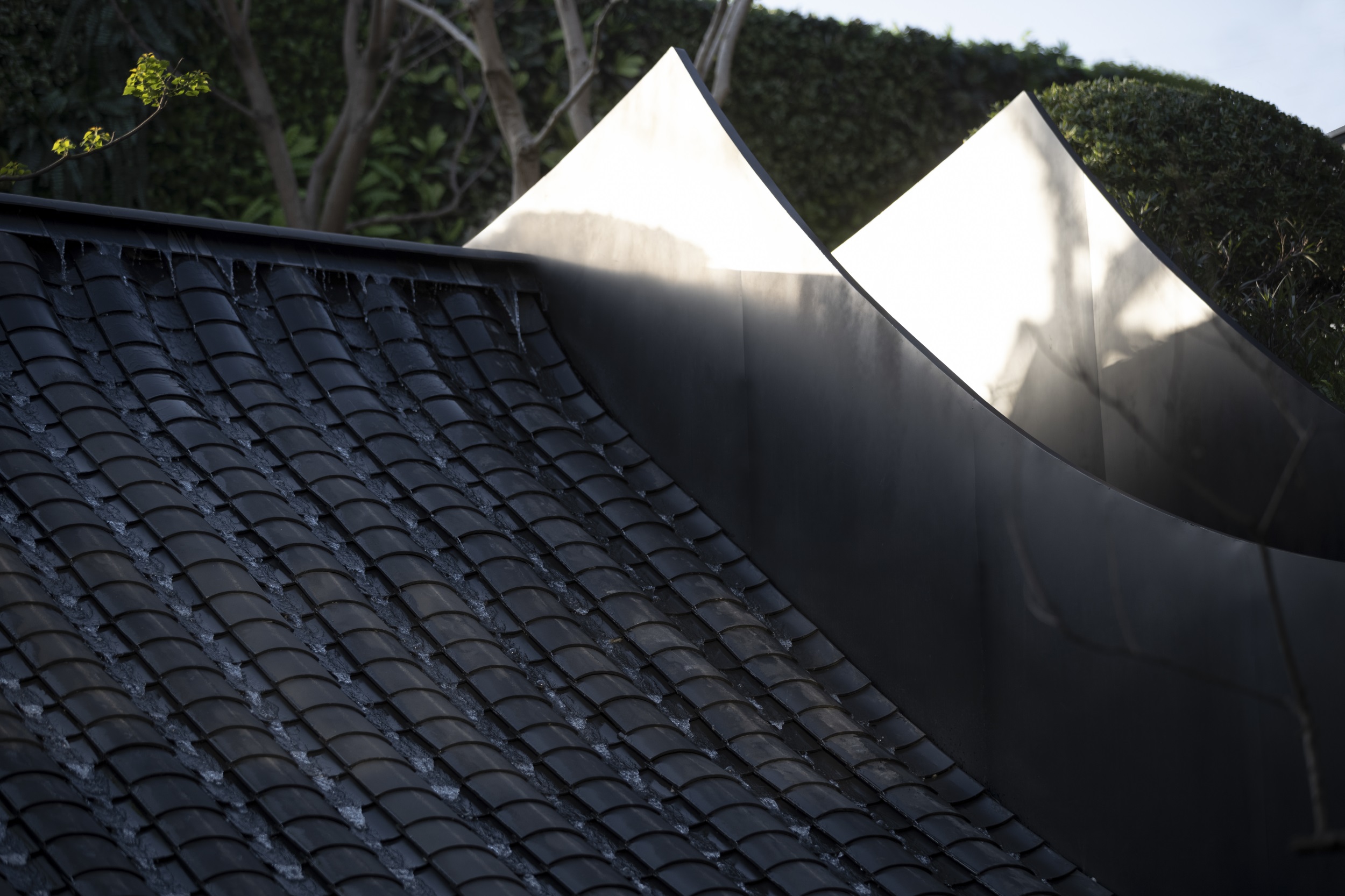
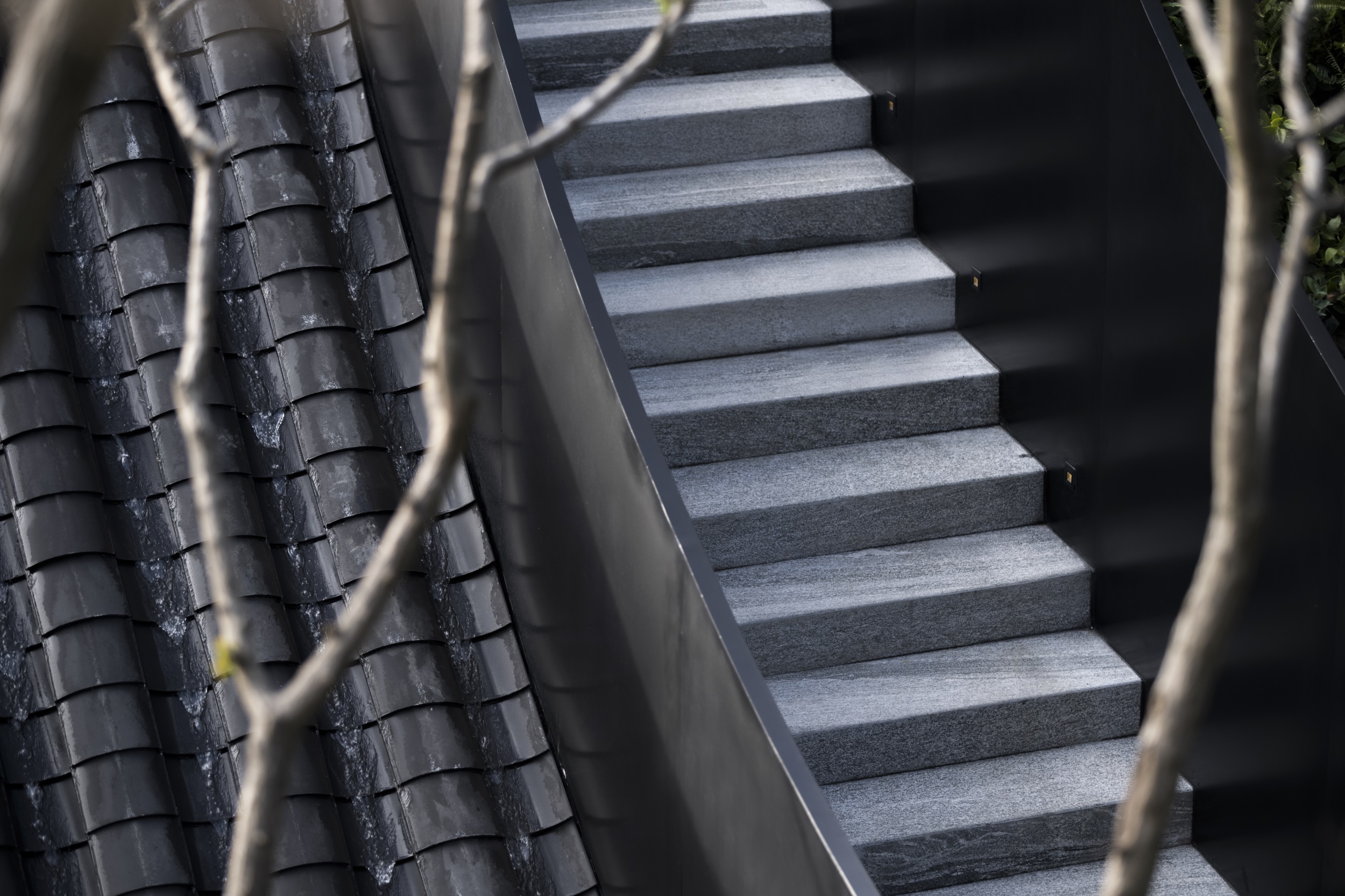
植物 Planting
植物造景的“单元砖”” Brick module ” of Plant Landscaping
和砖一样,植物也是构成空间的媒介。植物设计上,设计师想把地理记忆和空间构造做一次大胆的拼接尝试。每一株植物就是一块砖。植物会不停的把“砖”一块块垒上去,从而实现自身的生长。基于绍兴本地的植物氛围和性状,我们与施工图合作方魏玛共同尝试着选出几种当地植物,作为植物造景的“单元砖”,并在平面上排列出砖砌设计的组合结构。
会所及前场区的种植方式主要以生态多姿的自然式种植结合精致有雕塑感的球状灌木种植,再以有空间体积感且形态婀娜的高大乔木撑起空间,使之丰盈且精致、生态且多姿。设计希望打造禅意的江南村落,植物着重用精致、私密和隐奢的原生态古镇趣味的江南自然村落感。
Like bricks, planting is also a medium to compose spaces. In planting design, designers want to utilizethe local plants to recall the sense of familiarity from people’s memory and tocreate a refreshing modern place. Each plant is a brick. Based on the local planting palette and climate of Shaoxing, TROP collaborated with Weimar, theconstruction drawing team, select several local plants as the landscape “brick module” to compose spaces, compliment architectures, as well as complete the overall experience.
The planting methods of the clubhous eand the front area are mainly ecological natural planting combined with exquisite spherical shrubs with a sense of sculpture, and then the space issupported by tall trees with a sense of spatial volume and graceful shape to make it rich, exquisite, ecological and colorful. The design hopes to create a Zen village south of the Yangtze River. The plants focus on the interesting natural village feeling of the south of the Yangtze River with exquisite, private, and luxurious original ecological ancient towns.
▽植物设计 Plant design
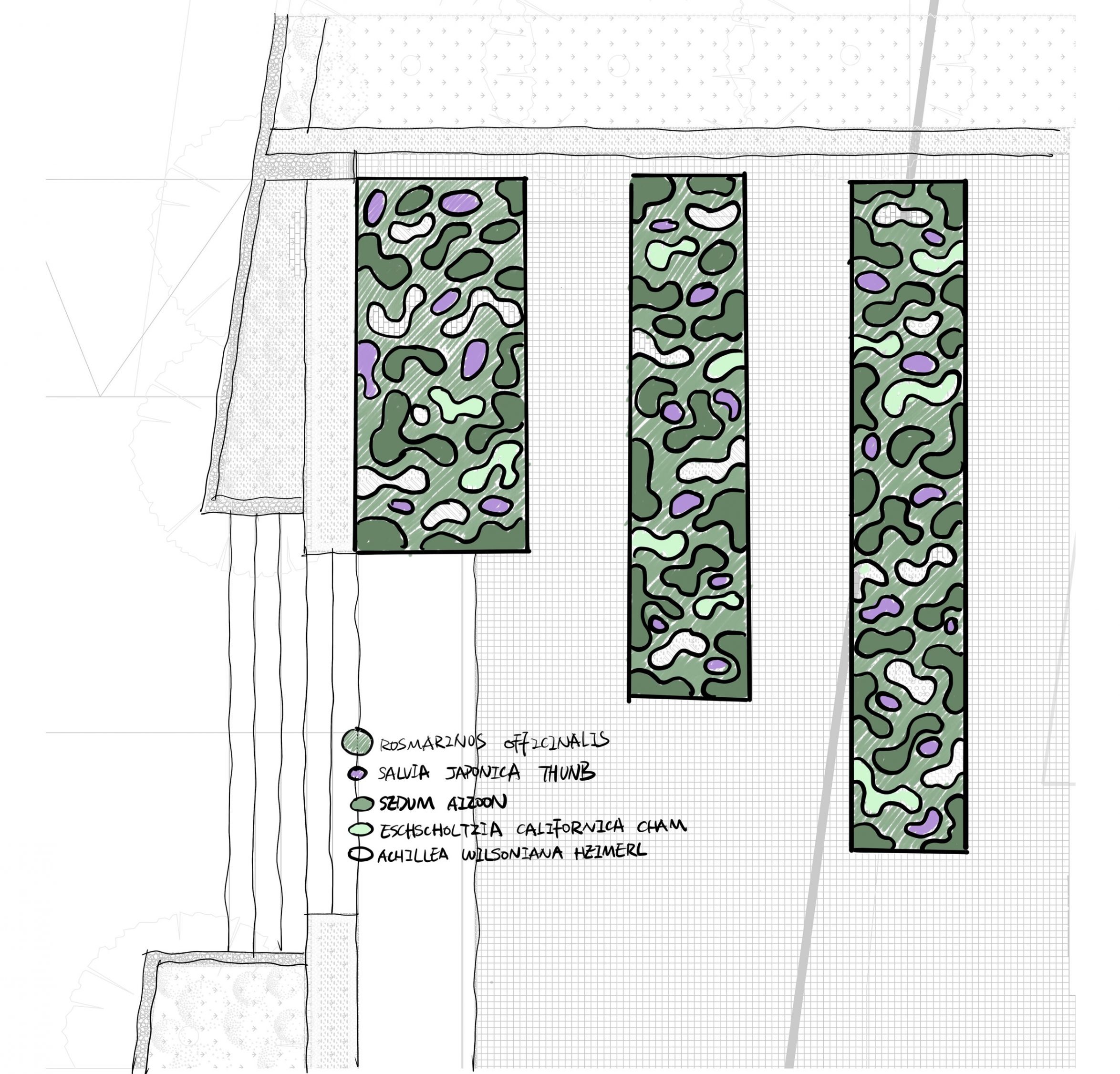
雨滴花园的自然主义种植 Naturalistic planting of raindrop Garden
植物设计组团方式上,我们的施工图合作方魏玛革新设计本源,从“江南烟雨,雨虽无形,落之有痕”的自然现象中获得空间设计灵感,以自然种植手法为核心,选以圆形龟甲冬青球作为整个雨滴凝珠的表现,搭配直立型较好的植物品种,如花叶玉蝉花,大麻叶泽兰,马利筋等,同时配合一些绿色填充植物迷迭香、毛鹃、狐尾天门冬、蓝雪花、肾蕨等。
在植物颜色呈现上以低饱和度的绿渐变过渡,在这里没有绚丽的开花植物品种喧宾夺主,植物空间在整体上与建筑青瓦屋檐浑然一体,这恰恰是我们想要的。种植手法上同一个时期的开花植物控制在3-4种之间,以期达到植物景观在系列性、连贯性、整体性中的季节美感。一滴雨落,一丛四季,植物转译千年梦萦,意境无穷。
Conceptualization of LDI Weimar landscape innovation Design.Although the rain is invisible, it falls with traces. The plant design team obtains space design inspiration from the misty rain and water drop condensation bead form in the south of the Yangtze River. Taking the natural planting method as the core, the round tortoiseshell Holly ball is selected as the performance of the whole raindrop condensation bead, combined with better upright plant varieties, such as flower leaf jade cicada, marijuana, Eupatorium Adenophora, milkweed, and some green filling plants, such as rosemary, Rhododendron, foxtail asparagus, blue snowflake, kidney fern, etc.
In terms of plant color, there is a green gradient transition with low saturation. There are no gorgeous flowering plant varieties here. The plant space is integrated within the green tile eaves of the building as a whole, which is exactly what we intended. In terms of planting methods, the flowering plants in the same period are controlled between 3-4 species, in order to achieve the seasonal beauty of the plant landscape incoherence and integrity. Drop of rain, the cycle of four seasons, the flora feels a thousand dreams, and the artistic impression is infinite”.
▽植物设计分析 Plant design analysis


▽植物空间营造 Plant space creation



水景深化落地难点 Difficulties in deepening the landing of waterscape
结构优化前瞻性 Forward-looking structural optimization
外部土建挡土墙支撑围合;内部斜面结构板梁组合搭配;从而形成外实内虚的底部架空结构。此空间不但可作为斜屋面水景的大型回水蓄水仓使用,也可实现钢砼用量经济最优化,并为施工过程中水下管道铺设,设备运输;日常检修提供通达的工作空间。
Support the enclosure of external civil retaining wall; Plate beam combination of internal inclined structure; So as to form a bottom overhead structure with external reality and internal emptiness. This space can not only be used as a recycled water storage bin for an inclined roof water feature, but also realize the economic optimization of steel concrete consumption, and provide for underwater pipeline laying equipment transportation during construction; Provide accessible working space for daily maintenance.
▽施工过程 Construction process
多渠道补水Multi-channel water replenishment
延续建筑设计语汇,由大面外向跌水与中间局部内向跌水组合而成斜屋面水景,在每个转换衔接的屋脊瓦下方增设补水暗沟,保证内外向跌水面连续性的同时,隐蔽且美观。
Continuing the architectural design Language. The main waterscape is composed of two parts, the inclined surface, and the recessed wall. A water make-up ditch is added under each converted ridge tile to ensure the continuity of internal and external falling water surface, hidden beautifully.
▽斜屋面水景施工过程 Construction process
斜面瓦雨水收集 Inclined tile rainwater collection
采用上下两层凹凸瓦铺设,交错搭叠,极富江南山峦脊背韵律,自然中蕴含肃穆沉静。凹瓦更能实现快速导水,雨水从层叠的瓦片中潺潺泻下,呈现出“完全自然的雨水收集”效果,一阵雨落,一抹诗意。
The upper and lower layers of concave-convex tiles are laid in a staggered manner, which enriches the rhythm of the back of the mountains in the south of the river, and contains “solemnity and silence in nature”. Concave tiles can drain the rapid water diversion, and the rainwater gushes from the stacked tiles, showing the effect of “completely natural rainwater collection”, with a shower of rain and a touch of poetry.
▽斜面瓦雨水收集施工过程 Construction process
江南水乡滨水而居,设计中将水乡中的屋檐、屋脊、水景融为一体,行走其中,仿佛走在古镇河边,屋顶向人扑面而来,带来文化的氛围。空间节奏抑扬顿挫,利用景墙、廊道和植物形成空间的开合关系。从到达空间的透景,到前场庭院的宏大与生机,再到下沉庭院的禅意静谧,几进空间形成不同的空间氛围,沿路走进,步移景异。
In the design, the eaves, ridges, and waterscape of the water village in Jiangnan are integrated. Walking in it is like walking by the river of the ancient town, and the roof pours onpeople, bringing a cultural atmosphere. The rhythm of space is rhythmic, and the opening and closing relationship of space is formed by using landscape walls, corridors, and plants. From the penetrating view of the space to the grandeur and vitality of the front courtyard, and then to the Zen tranquilityof the sunken courtyard, several spaces form different space atmospheres. Walking along the road, the scenery is different.
项目名称:安澜府示范区
地点:中国浙江绍兴
景观面积 Landscape Area: 6,600㎡
竣工时间:2021年11月
景观方案设计及扩初:T.R.O.P: terrains +open space
设计总监:Pok Kobkongsanti
景观设计团队:朱玉洁,陆雨婷,刘伊萍,银华梅,桑鹏涛,马可
甲方团队:方海锋 吴佳璠 杜恒 王从彦
业主单位:元垄 新希望 万科
摄影:DID STUDIO
景观施工图深化:魏玛景观
软景深化及现场服务:魏玛景观现场技术部
景观施工承包商 Construction Contractor:天勤
建筑设计:AAI国际建筑师事务所
室内设计:矩阵纵横
Project Name: The An Villa
Location: Shaoxing, Zhejiang, China
Landscape Area: 6,600㎡
Completed Time: November,2021
Landscape Design and Design Development: T.R.O.P : terrains + open space
Design Director: Pok Kobkongsanti
Team: Jayda Zhu. Yuting Lu, Yiping Liu, Huamei Yin, Pengtao Sang, Ke Ma
PARTY A Team: Haifeng Fang, Jiafan Wu, Heng Du, Congyan Wang
Developer: Yoland Real Estate Co.Ltd, Newhope, Vanke
Photographer:DID STUDIO
Construction Drawings: Weimar Landscape, Shanghai
Softscape and Construction Supervision: Weimar Landscape, Shanghai
Architect: AAI
Interior: MATRIX DESIGN
“ 用景观演绎记忆中的场景,拉近人与传统与自然间的距离。”
审稿编辑 王琪 – Maggie
更多 Read more about:T.R.O.P: terrains+open space & 魏玛景观


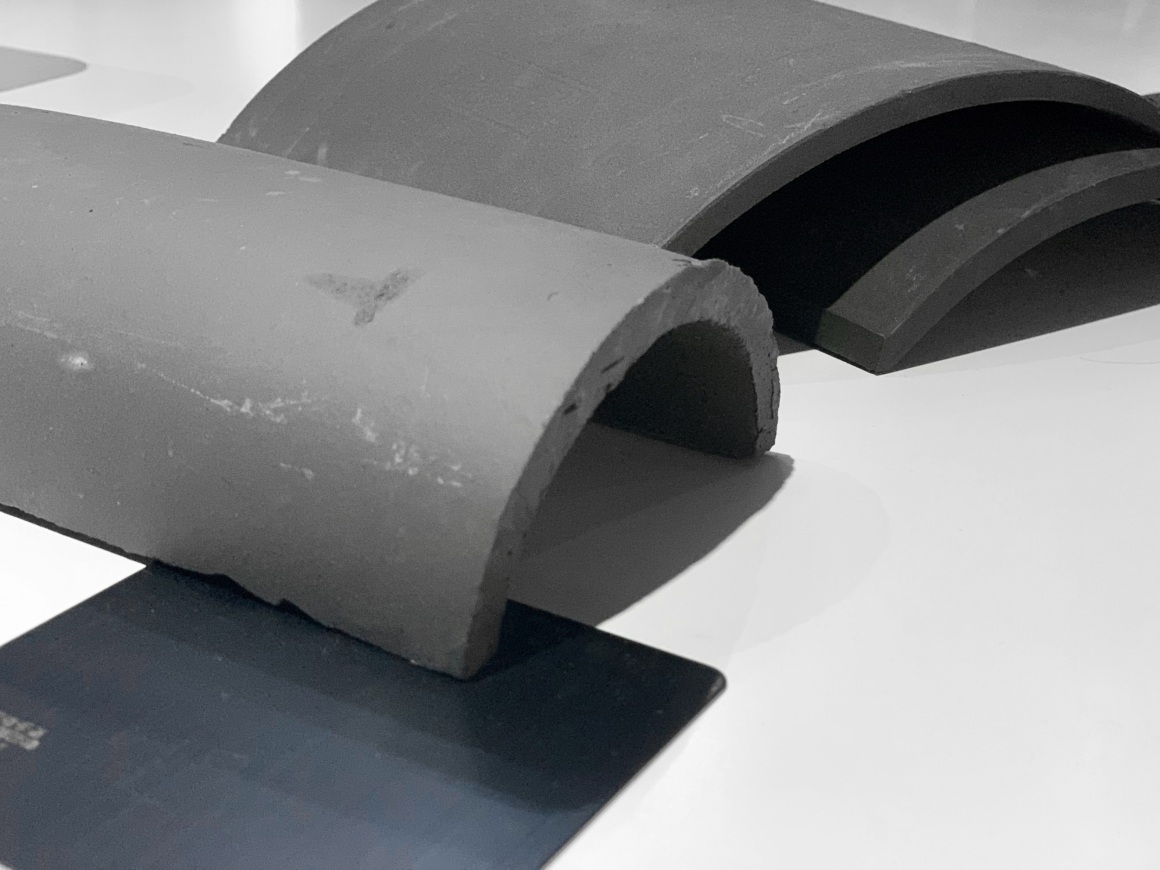





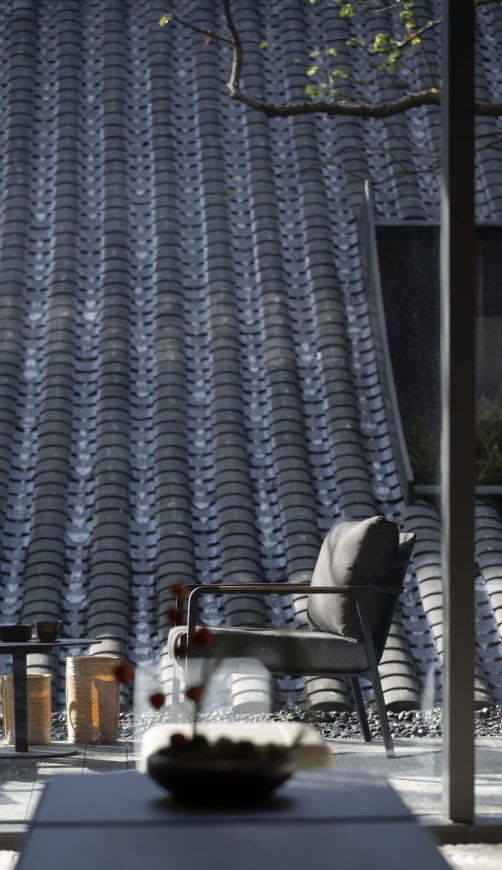
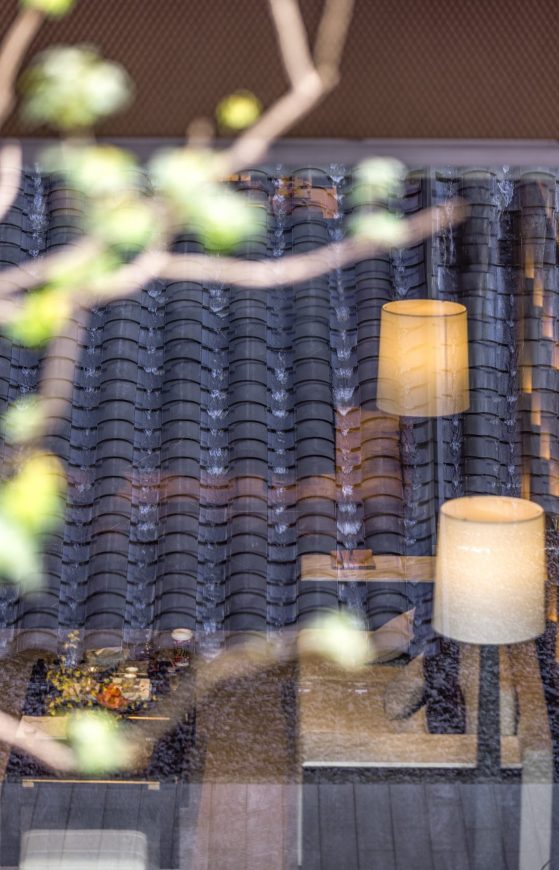


0 Comments